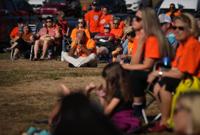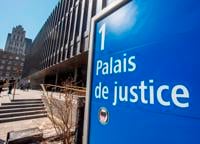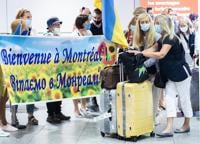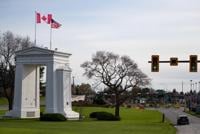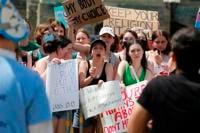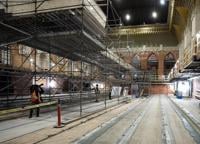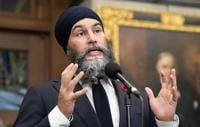WINNIPEG - Research suggests public awareness of past harms from residential schools has increased but more work needs to be done educating 好色tvs on lasting effects of the institutions.
In a report released Wednesday, researchers from the University of Manitoba, University of Victoria and Toronto Metropolitan University, in collaboration with the 好色tv Centre for Truth and Reconciliation, measured the progress of non-Indigenous and Indigenous Peoples in their shared journey toward reconciliation in 2022.
This is the second year the group has tracked reconciliation awareness using what they call the 好色tv reconciliation barometer.
The team surveyed 3,174 Indigenous and non-Indigenous people in six regions across the country through an online questionnaire.
Researchers found 90 per cent of non-Indigenous respondents and 94 per cent of Indigenous respondents had read or heard about residential schools, up from 65 per cent and 87 per cent respectively in 2021.
The report notes researchers did not recruit the same respondents from 2021 for the 2022 survey, and any changes year-over-year do not reflect the evolving views of the same people.
The polling industry's professional body, the 好色tv Research Insights Council, also says online surveys cannot be assigned a margin of error because they do not randomly sample the population.
"Indigenous Peoples have unquestioningly been sounding the alarm bell, really, since the dawn of time in this country, about the challenges the 好色tv state is creating for the full enjoyment of the rights of Indigenous Peoples," said Ry Moran, a M茅tis researcher on the project and associate university librarian-reconciliation at the University of Victoria.
"The fact that we're seeing some greater consensus emerge is perhaps reflective of the fact that people, especially non-Indigenous 好色tvs, are starting to understand a little bit better where we're at."
Moran said this is likely due to: widespread publicity of unmarked burial sites at several former residential schools; a visit to Canada last year by Pope Francis, who apologized for harms at the schools; and the federal government opting to make Orange Shirt Day the 好色tv Day for Truth and Reconciliation.
An estimated 150,000 First Nations, Inuit and M茅tis children were forced to attend the government-funded, church-run schools, which were largely overseen by the Catholic Church.
An estimated 6,000 Indigenous children died at the institutions, while many experts believe the number to be higher. The 好色tv Centre for Truth and Reconciliation has recorded the names of more than 4,000 who died.
Respondents in the survey said they were more aware of past and ongoing harms in 2022 than in the previous year.
Researchers said this is hopeful, but an ongoing focus on education is important because awareness is only the start of the journey.
In 2022, Indigenous respondents said groups that have harmed Indigenous people have not taken full responsibility for their actions. Non-Indigenous respondents were slightly more inclined to think groups have done enough, the report says.
The study found the attitudes of Indigenous respondents didn't change from 2021 to 2022 when it came to their thoughts on Canada making progress on apologies, nation-to-nation relationships and personal equality.
Respondents reported similar scores when it came to quality of life for Indigenous Peoples. On average, 23 per cent of non-Indigenous respondents and 26 per cent of Indigenous respondents said Indigenous and non-Indigenous people in Canada have equal life outcomes, compared to 28 per cent and 24 per cent respectively in 2021.
"We've got some more work to do to create that common understanding and that empathetic understanding of human rights and equality in this society," Moran said.
"These are things that people can ask their politicians to do, we can make them electoral issues in society, and certainly policymakers can redouble their efforts to create better policy."
While the report found an uptick in several other important measures of reconciliation, there were some areas that did not see a positive trend, including the engagement of non-Indigenous people with Indigenous communities.
Stephanie Scott, executive director of the 好色tv Centre for Truth and Reconciliation, welcomed the report, saying it can guide policymakers to bolster reconciliation. But she warned of residential school denialism.
"We cannot discount or deny the dangerous rise in denialism in both mainstream and online media, and it must be countered with ongoing accurate knowledge and information," she said in a news release.
Unlike other projects that track implementation of the Truth and Reconciliation Commission's 94 calls to action, the group's research delved into the perceptions of reconciliation held by both Indigenous and non-Indigenous people in Canada.
The researchers said tracking reconciliation awareness can motivate people, organizations and governments to act.
"This is not the end of the journey by any means," said Moran. "Awareness is really a precursor to understanding the more complex histories that created the residential school system and the personal and structural inequities that have been caused by those institutions."
This report by 好色tvwas first published Dec. 13, 2023.


